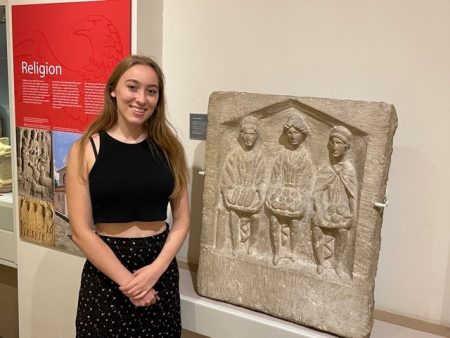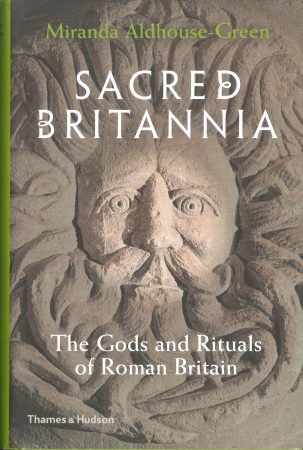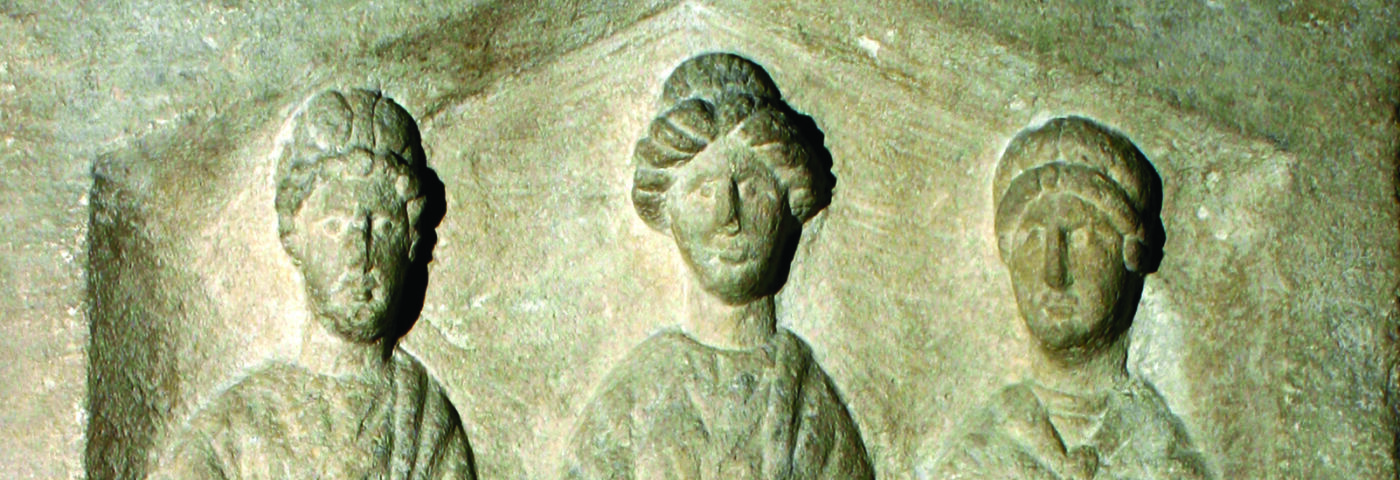Blog post by Fiona Beeston
Fiona is a student at King’s College, London, studying Classical Studies with English, she is currently on a Roman Society placement at Corinium Museum. Read on to discover more about the Matres and the Genii Cucullati and their roles and symbolism in Roman Britain.
The Matres and the Genii Cucullati are sacred figures, prominent in Roman Corinium. They are believed to have been representatives of fertility, both for humans and on a grand scale, with their imagery often shared and intertwined.
I had the absolute pleasure of discussing the Matres and the Genii Cucullati further with Professor Miranda Aldhouse-Green and learning more about the Corinium archaeological images that we have of them.

A prominent feature of the Genii Cucullati is the hooded cloak worn by each figure. The significance of these cloaks and their purpose in particular struck me. For some, the cloak is a symbol of death, a more Romanised idea; for others, the cloak represents the concealment of each spirit and their desire to remain hidden from the eyes of those who are unworthy of witnessing their power.

Corinium Genii Cucullati

Housesteads image
The comparison of the image from Housesteads and the image from Cirencester led Professor Aldhouse-Green and I to reflect upon the idea of the gaze and how each of these images are deeply impacted by our own observation and consumption. The Housesteads image is carved with more intricacy and detail than that of the Cirencester image, yet the simplicity of the triangular figures, in many ways, spoke to us more. The cloaks utterly conceal their identities and are the main focus of the carving; so little is physically revealed to the viewer, but the message of this secrecy is, to me, far more powerful.
Our discussion led us to a particular image of a Mother Goddess portrayed with masculine features. We questioned whether the artist intended to subvert gender norms with this portrayal and agreed that there is a need for further study of fluidity portrayed in archaeology and the meanings behind these. What strikes me is how willing the artist would have been to transgress the social boundaries of gender and create an image of a powerful, respected woman in the way they saw her; acceptance of this fluidity and gender play is a fascinating topic which invites more conversation.
A fascinating question which arose from our conversation stemmed from the positions of the Mother Goddesses and how they are portrayed: do their stances and placements hold more meaning than simply artistic stylisation? Typically, the Mothers are presented as sitting, often with children or produce to represent fertility and growth. In images where a single Mother is accompanied by three cucullati, why does she remain seated? Perhaps it is a reflection of her status, an almost regal position that she adopts.

The topics which Professor Aldhouse-Green and I discussed ranged from the significance of the number three to the worship of the Mother Goddesses by the Roman army. This conversation was a perfect insight into further ideas discussed in her book ‘Sacred Britannia’, and I am truly thankful for the experience.










